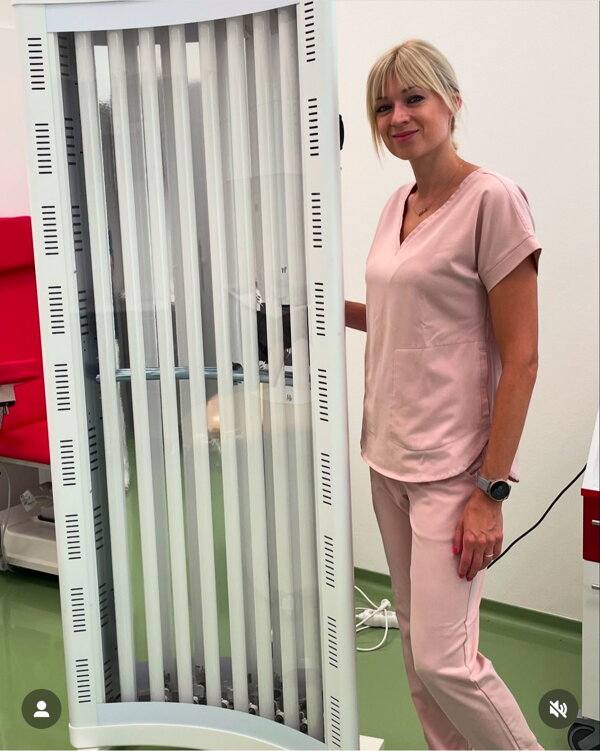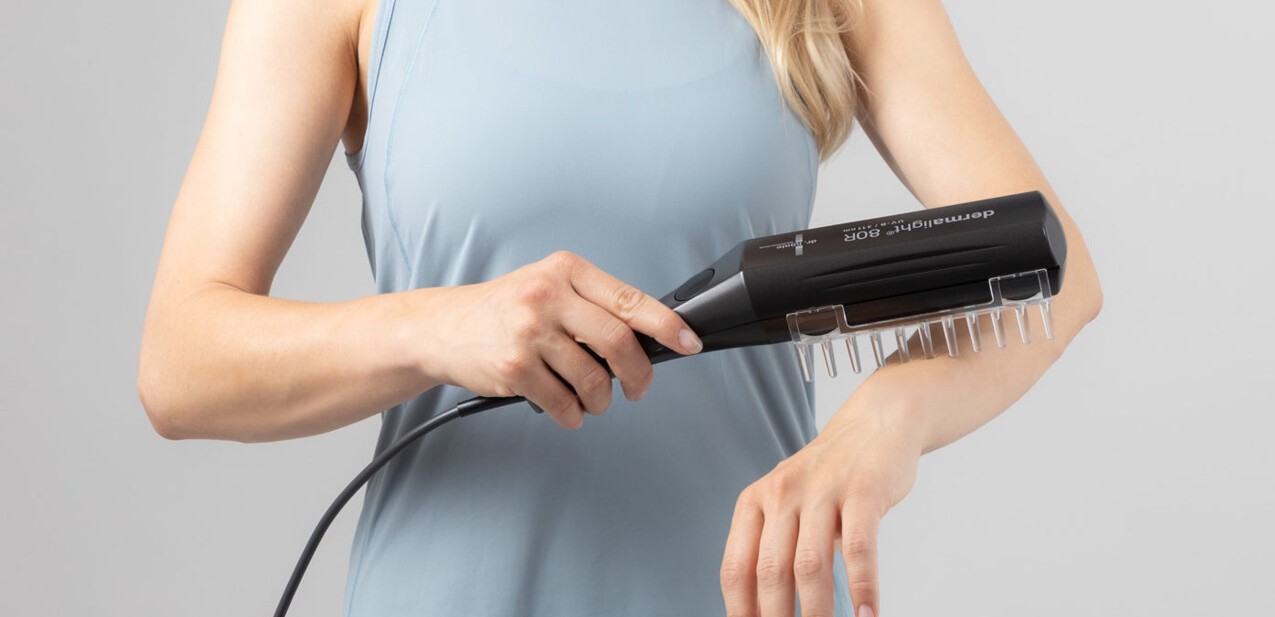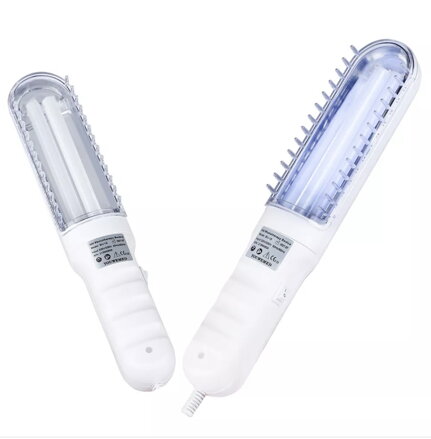Light treatment
Treating Vitiligo with UVB Light – Restoring Your Skin’s Natural Pigment
Vitiligo can significantly affect both your self-confidence and overall quality of life. Although there is currently no universal “cure” for vitiligo, modern dermatological research offers hope in the form of UVB therapy. This method utilises 311 nm wavelength radiation, which stimulates pigment-producing cells (melanocytes) to produce melanin, thereby helping repigment affected areas.
How Does UVB Therapy Work?
- Targeted Radiation (311 nm): A specific UVB wavelength is used, optimally stimulating the pigment cells (melanocytes).
- Activation of Melanocytes: UVB light supports melanin production, gradually leading to the repigmentation of white patches.
- Immunomodulatory Effect: UVB regulates autoimmune processes, which are often responsible for the further spread of vitiligo.
- Anti-inflammatory Action: It helps reduce inflammation and skin irritation, thereby promoting better healing.
- Long-lasting Results: With regular application, repigmentation can become stable and sustained over time.
Why Consider UVB Therapy?
- Non-invasive and Gentle Method: Compared to more radical approaches (e.g., certain medications or surgical interventions), UVB therapy is generally well tolerated and less taxing on the body.
- Visible Results: Many patients experience gradual repigmentation within just a few weeks of consistent use.
What to Know Before You Begin
Real-life Stories and Medical Recommendations
Many vitiligo patients report positive experiences with UVB therapy, noting that their white patches gradually regained colour and the spread of vitiligo slowed. Dermatologists worldwide consider UVB at 311 nm to be the “gold standard” for vitiligo treatment, thanks to its effective stimulation of pigmentation.
Be Inspired and Discover the Benefits of UVB Therapy
If you’re looking for a safe, proven, and highly effective method to restore your skin’s natural appearance, UVB light therapy could be the right choice.
Be inspired by the genuine reviews of our customers:
3 items
-
Add to Favourites
Youwemed BU-1S - 311nm Philips UVB Lamp
A special Philips UVB lamp designed for the treatment of vitiligo and psoriasis. It is stable, long-lasting, and easily portable. Simple to operate and easy to use, it is ideal for home use. Featuring a unique comb design, it is suitable for treating the scalp and body areas.
In stock (95 pcs)
135 £
-
Add to Favourites
TOP SEARCHED
Dermalight® 80R UVB
(1400010)German handheld UV lamp for home light treatment with UVB radiation with a wavelength of 311 nm.
In stock (33 pcs)
390 £
-
Add to Favourites
Special offer
Dermalight® 80R UVB + Vitistop Gel & Tablets
German handheld UV lamp for home light treatment with UVB radiation with a wavelength of 311 nm.
In stock (49 pcs)
399 £
459 £ Discount 13.1%
We have prepared for you a simplified procedure for vitiligo repigmentation with the UVB handheld lamp "The home treatment" -> E-Book

"I recommend UVB phototherapy as an effective method in the treatment of vitiligo.
Dermalight UVB 311nm devices are also utilised in our clinic.
The combination of phototherapy with local treatment and Vitistop products has proven to be our most effective approach."
Dermatology Clinic Dermanat
UVB phototherapy is a treatment method that utilises a specific spectrum of ultraviolet light (UVB) – usually around 311nm, which is the optimal wavelength for treating skin conditions. In vitiligo, the skin loses its melanin pigment, which normally protects it from the sun's rays. Without this pigment, the affected areas are much more prone to burning and damage.
The aim of UVB phototherapy is to specifically treat these unprotected areas. The technique involves using UVB radiation to induce a mild, controlled "burn" in the affected region. This process stimulates the immune system and concurrently promotes the activation of the remaining melanocytes – the cells that produce pigment – in the surrounding skin. As a result of this stimulatory effect, the melanocytes begin to produce new pigment, which can lead to the gradual repigmentation of the affected areas.
It is important to note that this process is very gentle and controlled. The objective is to achieve an optimal stimulus for the formation of new pigment without causing excessive damage to the skin. Therefore, it is essential to strictly adhere to the recommended intervals and exposure times during treatment. If the unprotected vitiligo area is not "burnt", the affected region will lack the necessary stimulus for regeneration, and the melanocytes will not engage in the production of new pigment.
This treatment approach allows for a subtle activation of the skin, which subsequently gradually returns to its normal pigmentation.








.png)



